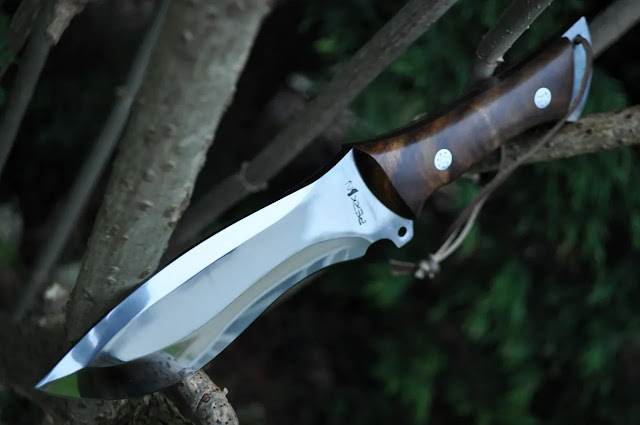Tips on Using the Full Tang Bushcraft Knife in the Wild
So, you are looking to know the versatile uses of the bushcraft knife!
Well, that's why you have landed right here, looking on to know the uses of the full tang bushcraft knife.
A decent bushcraft knife can make life in the woods much more comfortable, from cutting wood for fires to building shelters.
In a survival situation, though, if your only experience with a knife is spreading peanut butter and jelly, you're not going to get much use out of one.
Here are the handy tips for using the best survival knife in the woods.
1. Cutting Small Trees and Branches
You'll need to trim branches into smaller pieces, whether you're acquiring supplies for a shelter, building a tripod, or collecting fuel. It is usually best done with an axe, but your knife should suffice if you don't have one. Chopping or carving are two options.
Cutting thread and gauze, collecting tinder, kindling, and fuel, lighting the fire, or fashioning the shelter and strapping down a windproof material with proper lengths of rope are all things that your knife will come in handy for.
Also, make sure your knife's blade is thicker to get greater results without hurting it. To avoid damaging the handles or scales, use a full-tang knife.
2. Making Feather Sticks
Even under difficult conditions, making feather sticks will allow you to start a fire. Ideally, it takes some practice and a sharp knife to make them. Making thin shavings down the grain of the wood will produce kindling curls that can be left on the stick to aid in fire lighting.
3. Start Fire Lighting
When combined with a ferrocerium-based fire striker steel rod, you can also use Knives to start a fire. The friction created by scraping the back of the knife on the steel creates sparks. The sparks can then be used to light bark scrapings or other fuel, after which the feather sticks and kindling can be utilised to construct the fire. To execute this, you'll need a knife with a 90-degree spine (not rounded or polished) that can generate a lot of sparks.
In the absence of a fire striker steel, a regular flint stone can be used to ignite sparks by hitting it with the back of a carbon steel knife. This technique is significantly more difficult, but it is extremely rewarding once mastered.
4. Food Preparation
Your stomach is growling now, so think about how a survival knife can help you get some food. You can use it to pick edible plants, carve spears, fishhooks, animal trap components, skin game, stomach fish, and avoid eating with your fingers (as long as you're careful). Beyond these frequent applications, you may come across more unique to your survival situation.
5. Carving Useful Objects
Carving spoons or other tools and equipment around the camp is an important component of bushcraft and a great way to develop knife skills. Wood carving is also a lot of fun, and while you should use specific wood carving blades for it, a decent bushcraft knife combined with the appropriate technique may help you make some amazing things.
When purchasing a bushcraft knife, be sure it can handle both simple and complex jobs. You can determine whether your knife can perform both tiny and major tasks by learning to carve.
Conclusion
You can only use a bushcraft knife if you know how to use it in the first place.
Because the knife won't do the cutting for you, you should prepare to master these useful tips before picking up a bushcraft knife.


.png)

Comments
Post a Comment